7 Quick Remedies to Calm Your Dog’s Queasy Stomach Today
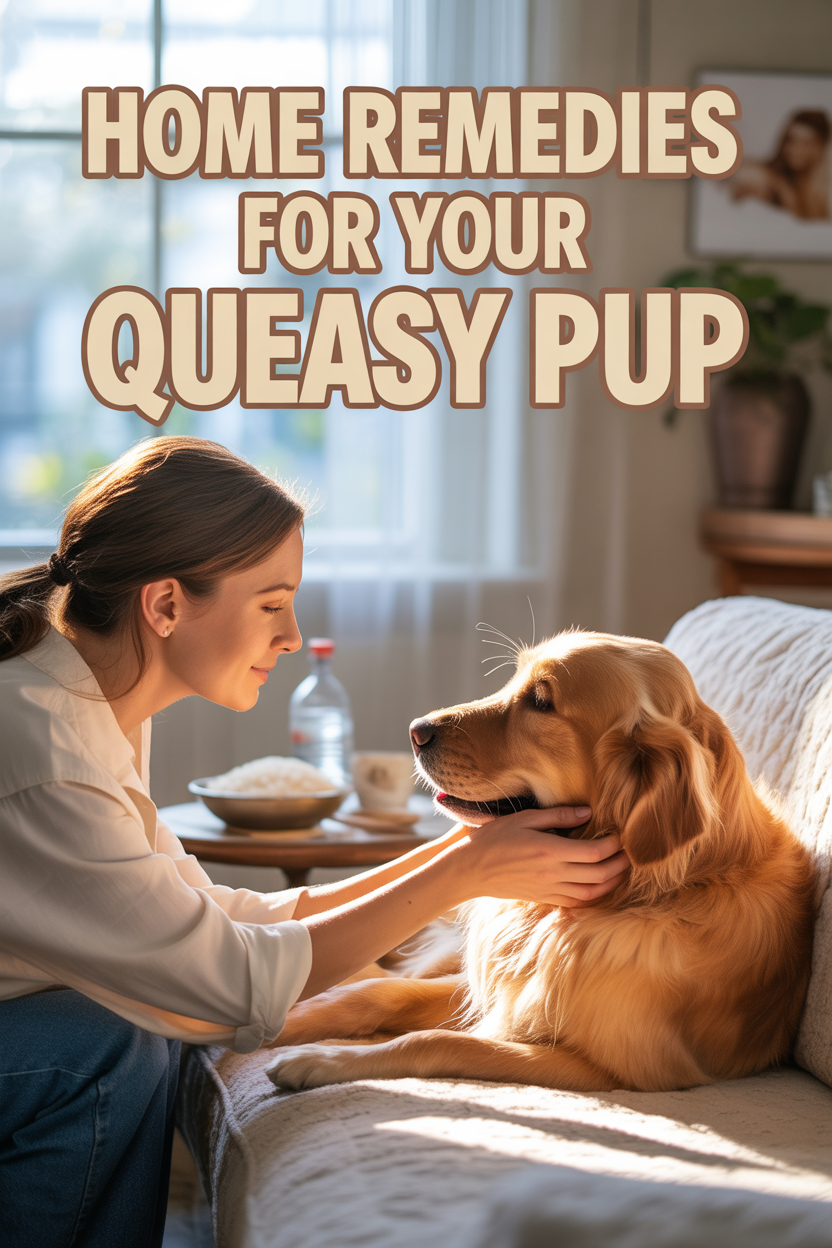
How Can I Tell if My Dog Is Nauseous?

Is your four-legged friend making that infamous “I’m about to redecorate the carpet” face? That look of unease, followed by lip-licking and gulping, is a clear signal of canine queasiness. Dog nausea is incredibly common and often leaves us scrambling for a solution to help our furry companions feel better.
Before your dog gets sick, they will give you several clues. Being able to spot these early can help you intervene before things get messy. Recognizing these subtle signs is the first step in providing gentle, effective home care.
Look for excessive drooling, frequent lip licking, or increased swallowing. These are your dog’s attempts to manage the discomfort. They might also appear restless, pacing around as if trying to walk off the feeling.
A sudden loss of appetite is another major red flag. When a food-motivated pup turns their nose up at their favorite meal, you know something is amiss. They might also start eating grass, an instinctual behavior either to induce vomiting or to soothe their stomach.
Pay attention to their overall energy levels. Unusual lethargy or a lack of interest in their favorite activities often accompanies an upset stomach. As noted by experts, these cues are your dog’s way of saying, “I don’t feel so good.”
What Causes Nausea in Dogs?
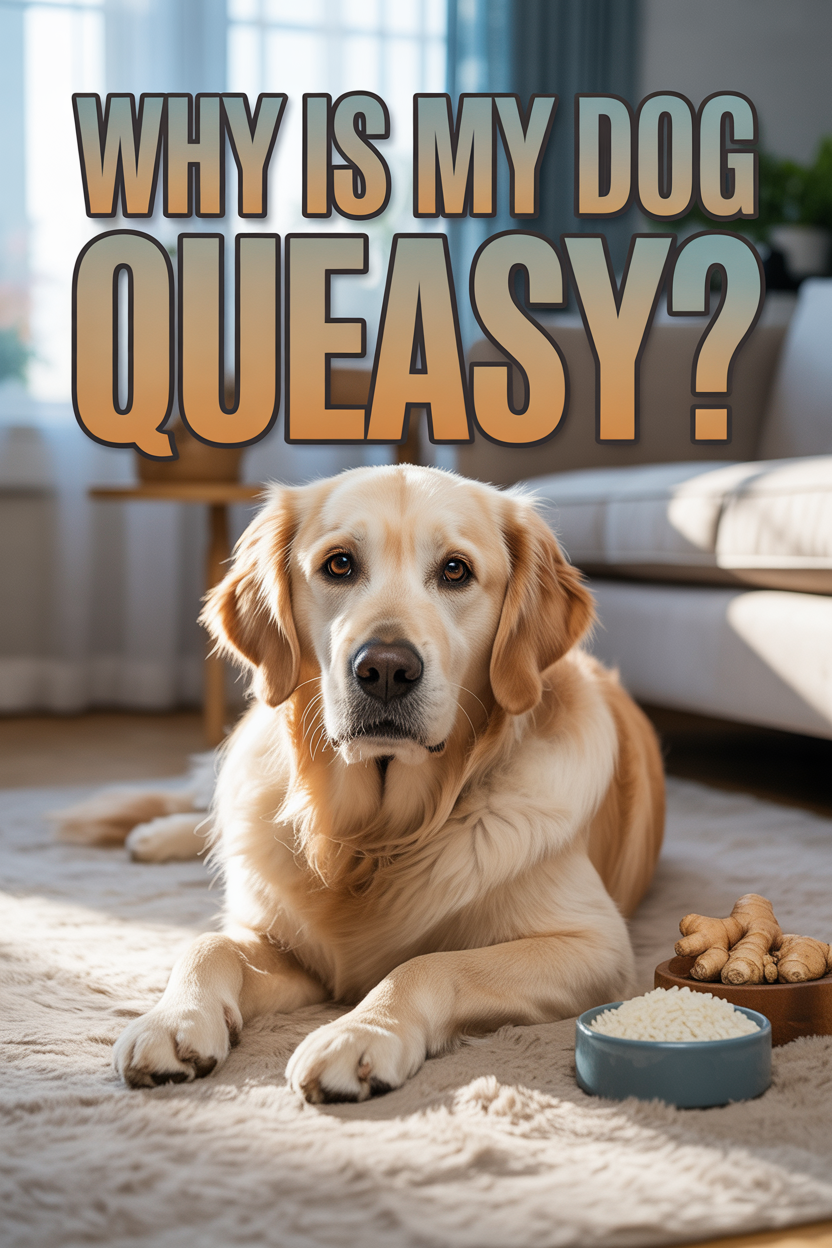
Before you can soothe your pup’s tummy, it helps to understand why they feel sick. A dog’s nausea can be triggered by a wide range of issues, from simple mistakes to more complex health problems. Knowing the potential cause helps you choose the right course of action.
One of the most frequent causes is “dietary indiscretion,” which is a polite way of saying your dog ate something they shouldn’t have. This could be anything from garbage scraps to a mysterious object found in the yard.
Just like people, dogs can have food allergies or sensitivities that lead to digestive upset. Other times, the cause is simple motion sickness from a car ride. Some dogs are just not great co-pilots!
Sometimes, nausea is a side effect of medication. Viral or bacterial infections can also cause an upset stomach, as can internal parasites. In more serious cases, it could be a sign of a digestive disorder like pancreatitis.
Don’t overlook emotional causes, either. Anxiety and stress can show up physically, leading to nausea and vomiting. According to veterinary experts, identifying the root cause is key to providing effective relief and preventing future episodes.
When Should I Call the Vet for My Dog’s Nausea?
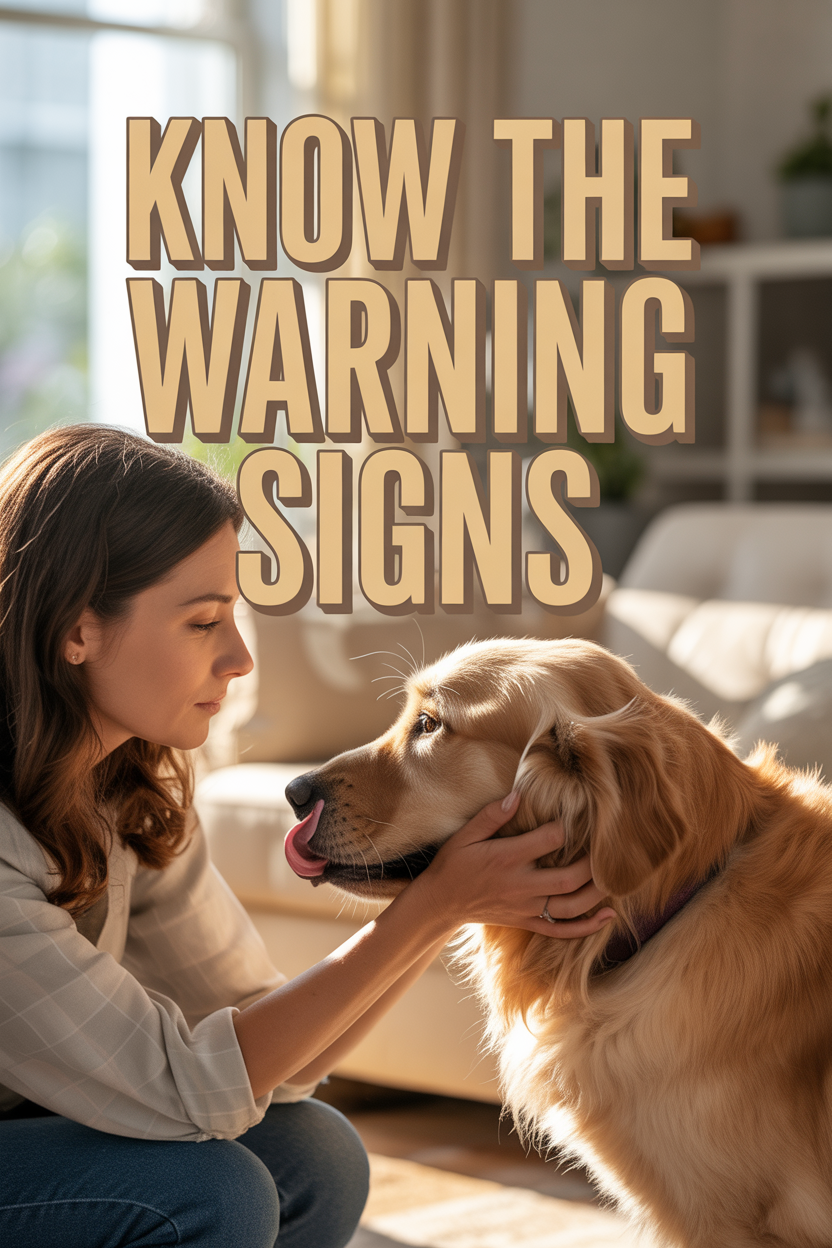
While many cases of dog nausea can be managed at home, certain symptoms require immediate professional attention. It’s crucial to know the difference between a mild stomach ache and a serious medical emergency.
You should call your vet immediately if you notice any of the following:
Continuous vomiting that lasts for more than 24 hours is a major concern. If your dog is unable to keep even small amounts of water down, they are at high risk for dehydration.
The presence of blood in your dog’s vomit or stool is a critical red flag. This can look like fresh red blood or dark, coffee-ground-like material. Also, watch for an abdomen that seems bloated, hard, or painful to the touch.
Extreme lethargy, weakness, or collapse are signs of a severe problem. A dog who is very young, elderly, or has a pre-existing health condition is more vulnerable and should see a vet sooner rather than later.
If you suspect your dog has ingested a foreign object (like a sock or toy) or a toxic substance, do not wait. Knowing these red flag symptoms can save your dog’s life. When in doubt, always err on the side of caution and contact your vet.
Should I Withhold Food When My Dog Is Nauseous?
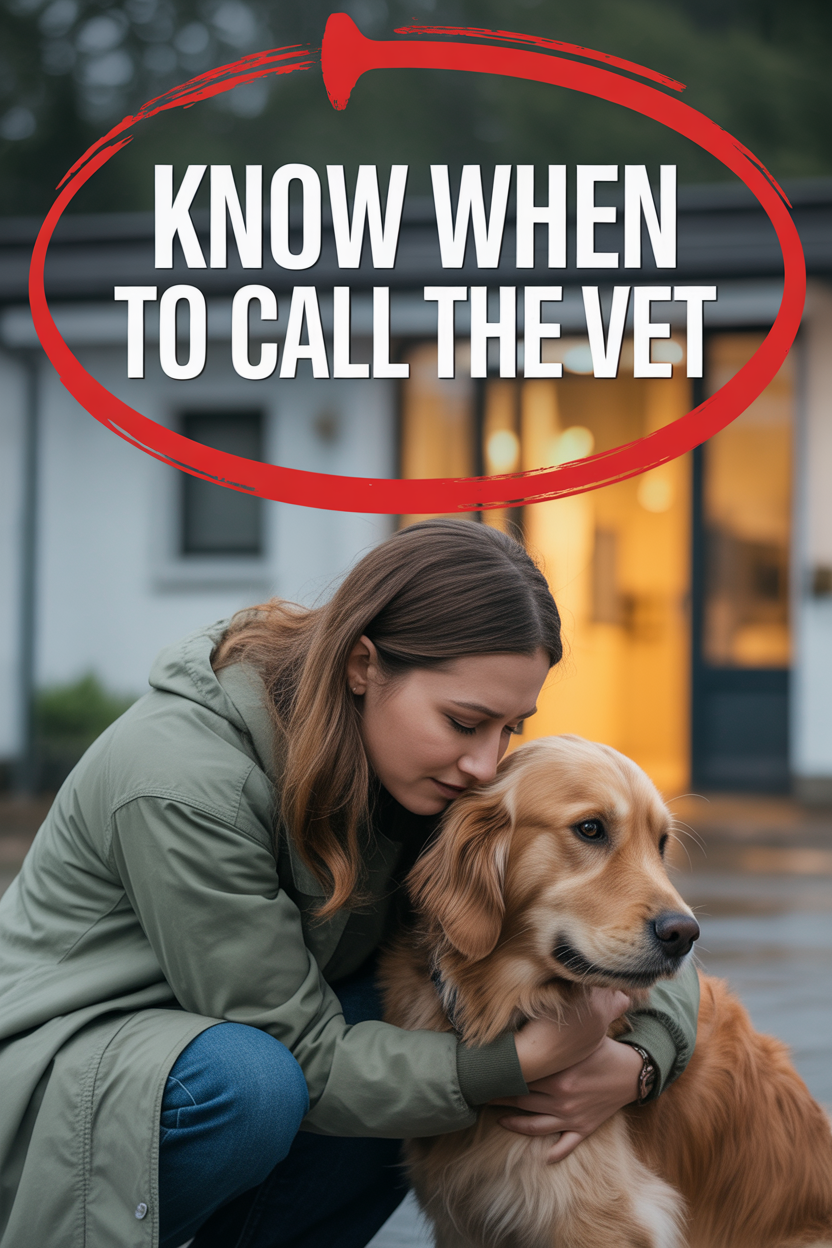
One of the best first steps for a nauseous dog is to give their digestive system a break. A short-term fast can work wonders by allowing inflammation to calm down and giving the GI tract a chance to reset.
For most healthy adult dogs, you can withhold food for 12 to 24 hours. Your dog may give you sad, pleading eyes, but this brief “stomach vacation” is for their own good. It’s a method often recommended by veterinarians as a first line of defense.
However, you should never withhold water. Dehydration can quickly complicate the situation, so ensure a bowl of fresh, clean water is always available. If your dog is drinking too fast and vomiting, you can offer small amounts of water or ice cubes periodically.
It’s important to note that fasting is not appropriate for all dogs. Puppies, senior dogs, and those with underlying health conditions like diabetes should not be fasted without consulting a veterinarian first.
After the fasting period is over, don’t jump right back to their regular food. The next step is to reintroduce food very slowly and gently with a bland diet.
What Is a Bland Diet for a Dog?

After a fast, your dog’s stomach needs something incredibly easy to digest. This is where the classic bland diet of chicken and rice comes in. It’s the perfect comfort food for a recovering digestive system.
To prepare this soothing meal, follow these simple steps:
First, boil some plain, boneless, skinless chicken breast or lean ground turkey. Do not add any oils, fats, or seasonings. The goal is pure, simple protein.
Next, cook some plain white rice. While brown rice is normally healthier, its higher fiber content can be too rough on a sensitive stomach. White rice is easier for your pup to break down.
Mix the rice and meat together, aiming for a ratio of about two or three parts rice to one part meat. The higher proportion of rice provides gentle, binding carbohydrates.
Start by offering a very small portion, just a tablespoon or two, to see if your dog can keep it down. If they do well, you can offer small meals every few hours, gradually increasing the portion size. This bland diet is the perfect bridge back to their normal food.
How Can I Keep My Nauseous Dog Hydrated?

Keeping your dog hydrated is critical when they’re nauseous, but gulping water can often trigger more vomiting. This is where a few simple hydration tricks come in handy to provide moisture without overwhelming their system.
The easiest trick is to offer ice cubes. Many dogs enjoy licking or crunching on them, and it forces them to take in water slowly. This simple method, often recommended by veterinary professionals, can make a huge difference in preventing dehydration.
For a hydration boost that also provides nutrients, consider homemade bone broth. This gentle liquid is easy on the stomach and can help soothe an inflamed digestive tract. Simply simmer dog-safe bones in water for at least 24 hours, then strain it carefully.
Once the broth has cooled, skim the layer of fat from the surface, as fat can worsen digestive upset. You can serve a few tablespoons of the warm (not hot!) broth as a comforting, hydrating drink.
Bone broth is packed with gelatin and nutrients that coat the gut lining. It’s essentially comfort food in liquid form and can entice a dog who is otherwise refusing to drink.
Is Ginger Safe for a Nauseous Dog?

Ginger is a well-known anti-nausea remedy for humans, and it can be safely used for our canine friends, too. This powerful root has properties that help calm stomach spasms and improve digestion, effectively settling an upset tummy.
Before giving your dog ginger, it’s essential to get the dosage right. Too much can cause further irritation. Always check with your vet for a recommendation tailored to your dog’s size and health status.
One way to offer ginger is in its fresh form. Grate a tiny amount of fresh ginger root and mix it with a small amount of food. For a small dog, a pea-sized amount is sufficient, while a large dog might handle up to a quarter teaspoon.
You can also brew a ginger tea. Steep a few slices of fresh ginger in hot water, let it cool completely, and then offer your dog a few spoonfuls. This can be a gentle way to introduce the soothing properties of ginger.
As herbal medicine research shows, ginger is an effective natural remedy. However, it should be used with care, especially in dogs with known bleeding disorders or those on certain medications.
Can Pumpkin Help My Dog’s Upset Stomach?
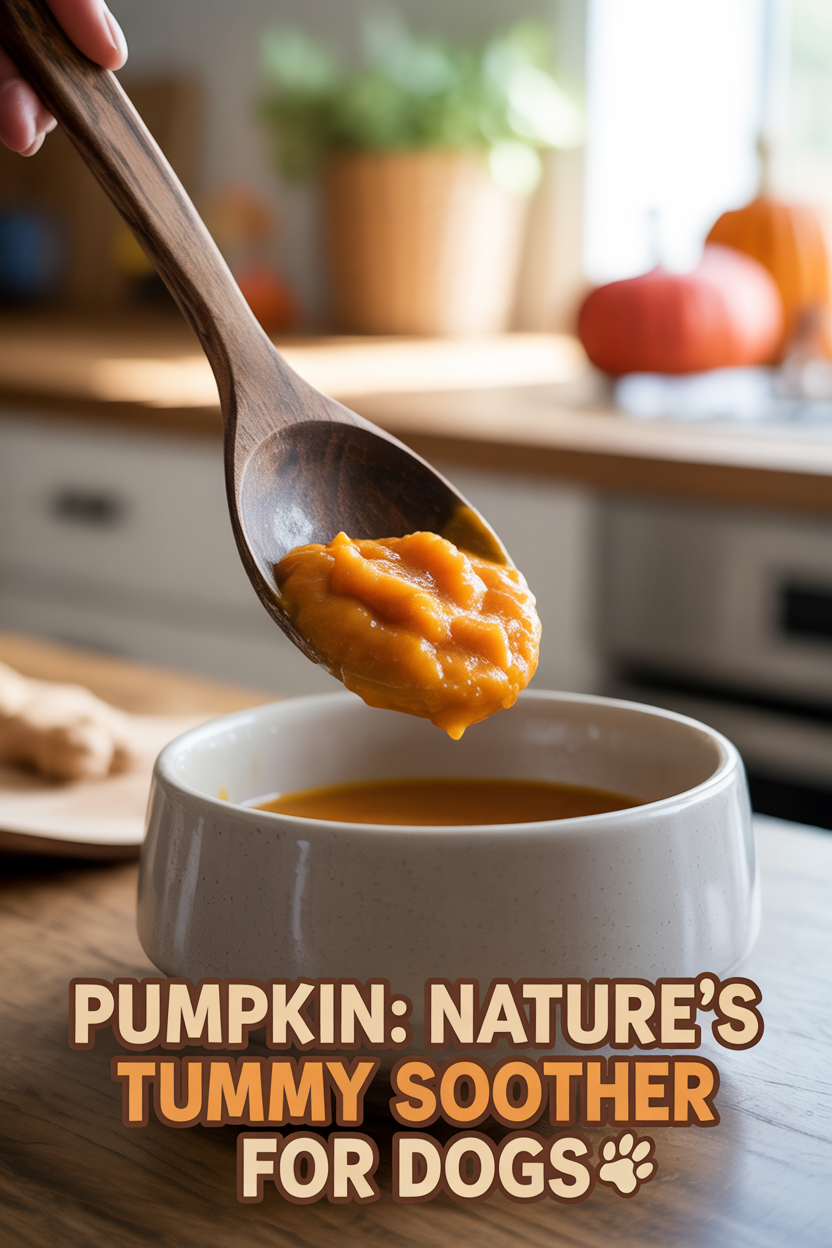
Plain, canned pumpkin is a handy remedy that every dog owner should keep in their pantry. It works wonders for a variety of tummy troubles, including nausea.
The magic of pumpkin lies in its high soluble fiber content. This fiber acts like a sponge, soaking up excess stomach acid that can contribute to nausea. It also has the unique ability to help with both diarrhea (by adding bulk) and constipation (by adding moisture).
When you purchase pumpkin, make sure you get 100% plain canned pumpkin. Do not use pumpkin pie filling, which is loaded with sugar, spices, and xylitol, all of which can make your dog’s condition much worse.
Serving is simple. You can add a spoonful directly to your dog’s bland diet. A good guideline is about one teaspoon for small dogs and up to a few tablespoons for large breeds.
Most dogs love the taste, making it an easy “medicine” to administer. The fiber in pumpkin is what makes it such a digestive health powerhouse, helping to regulate their system gently and effectively.
What Herbal Teas Are Safe for a Dog’s Upset Stomach?

Certain herbal teas can offer gentle relief for a dog’s upset stomach. Chamomile and peppermint are two of the most common choices, but they should be used with knowledge and care.
Chamomile tea is an excellent choice for its mild sedative and anti-spasmodic properties. It can help relax the muscles of the stomach and intestines, easing the cramping that often accompanies nausea. It can also help calm a dog who is feeling anxious because they are sick.
To use chamomile, brew a cup of pure, caffeine-free tea and allow it to cool completely. You can then add a few tablespoons to your dog’s water bowl or offer it directly. As a gentle herbal remedy, it provides a soothing touch.
Peppermint can also help with nausea, but it must be used with much more caution. It can be irritating to some dogs and should never be used for pets with GERD. Never give a dog peppermint essential oil internally.
If you choose to use peppermint, a few drops of very diluted, cooled peppermint tea is the safest route. Because it’s an “advanced class” home remedy, it’s often best to stick with gentler options like chamomile or consult your vet.
How Do Probiotics Help a Dog’s Upset Stomach?
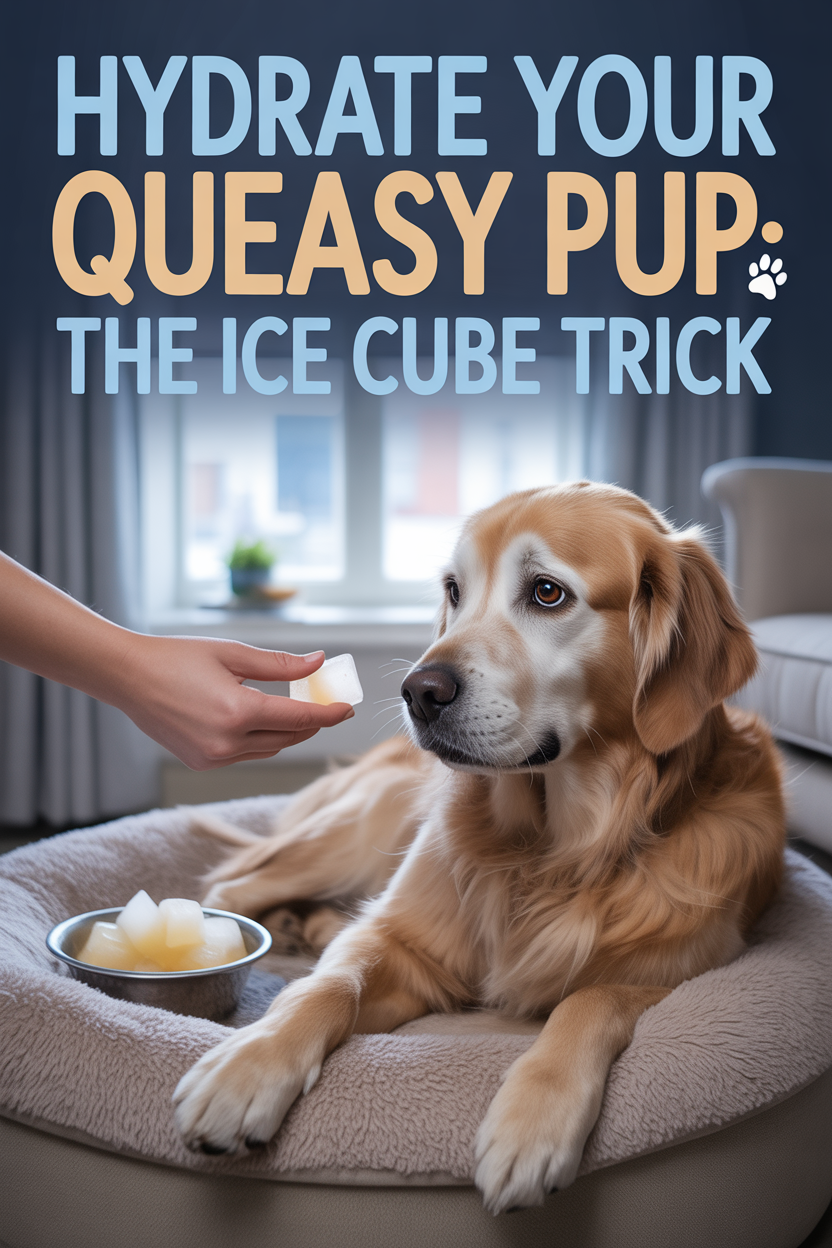
Your dog’s gut is a complex ecosystem filled with billions of bacteria, both good and bad. When a dog is nauseous or has diarrhea, this delicate balance is thrown off. Probiotics are beneficial bacteria that help restore harmony to the digestive tract.
Introducing probiotics can help replenish the “good guys” and get your dog’s gut back on track. This is especially helpful after a bout of illness that has cleared out their system.
One of the best sources is a probiotic supplement specifically formulated for canines. These products are designed to survive the acidic environment of a dog’s stomach and deliver beneficial bacteria where they are needed most.
You can also offer natural food sources of probiotics. A spoonful of plain, unsweetened yogurt that contains live, active cultures is a great option. Make sure it contains no artificial sweeteners like xylitol, which is toxic to dogs.
Plain kefir, a fermented milk drink, is another excellent source. These foods help repopulate the gut with beneficial flora, which can help restore order and strengthen the digestive system against future upsets.
What Foods Should I Avoid Giving My Nauseous Dog?
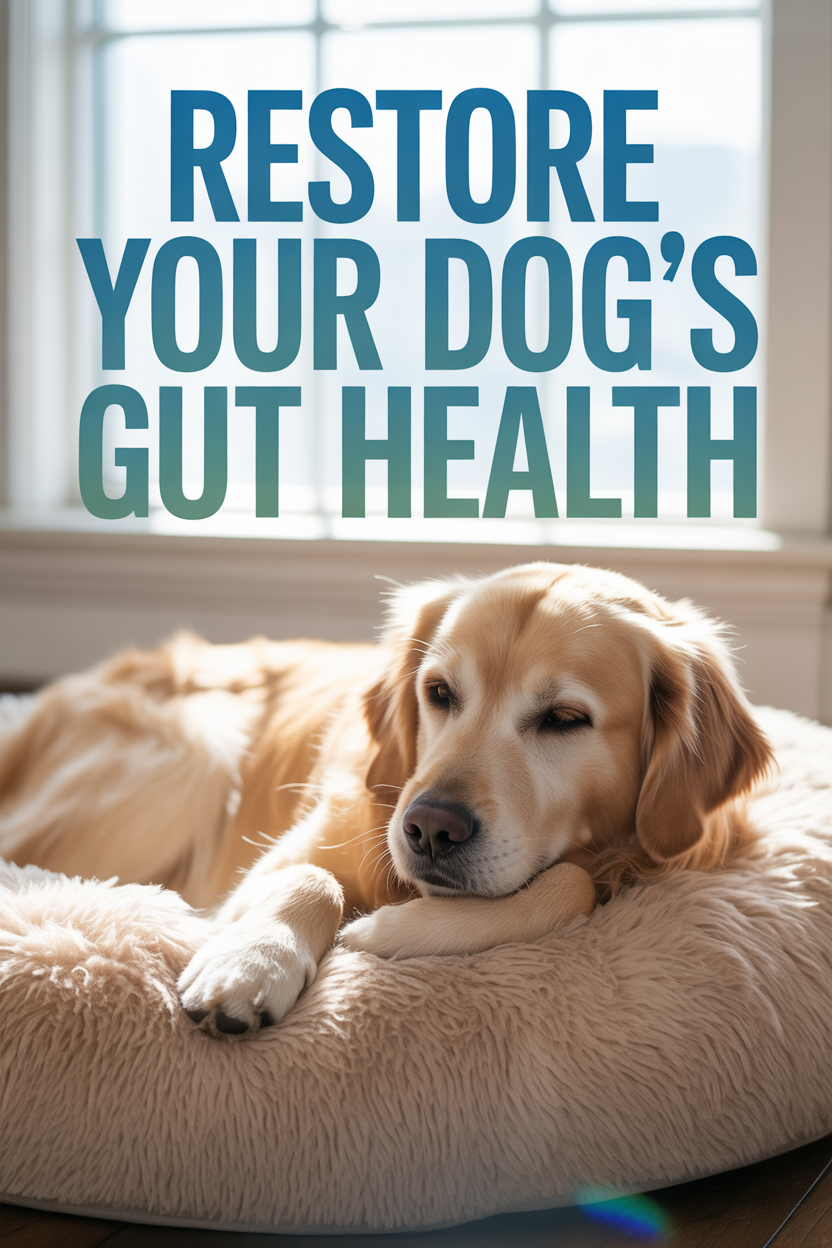
Just as important as knowing what to give your nauseous dog is knowing what to avoid. Feeding your dog the wrong thing can easily make the situation worse, leading to more discomfort and a longer recovery time.
First and foremost, avoid any foods that are fatty, rich, or greasy. Things like bacon, fatty meats, or anything cooked in a lot of oil can be very difficult to digest and may even trigger pancreatitis, a serious inflammatory condition.
Steer clear of most dairy products, with the exception of small amounts of plain yogurt or kefir. Many dogs are lactose intolerant, and milk or cheese can lead to more GI upset. Also, avoid store-bought treats, which are often full of artificial ingredients and preservatives.
It’s crucial to avoid all seasoned human foods. Spices, salt, onions, and garlic can irritate your dog’s stomach lining. Most importantly, never give your dog human medications or any product containing artificial sweeteners, especially xylitol, which is extremely dangerous.
When your dog is sick, bland is best. Sticking to simple, unadorned foods is the safest path to recovery and will keep you from accidentally feeding your pup one of these common tummy troublemakers.
How Can I Prevent Future Upset Stomachs?
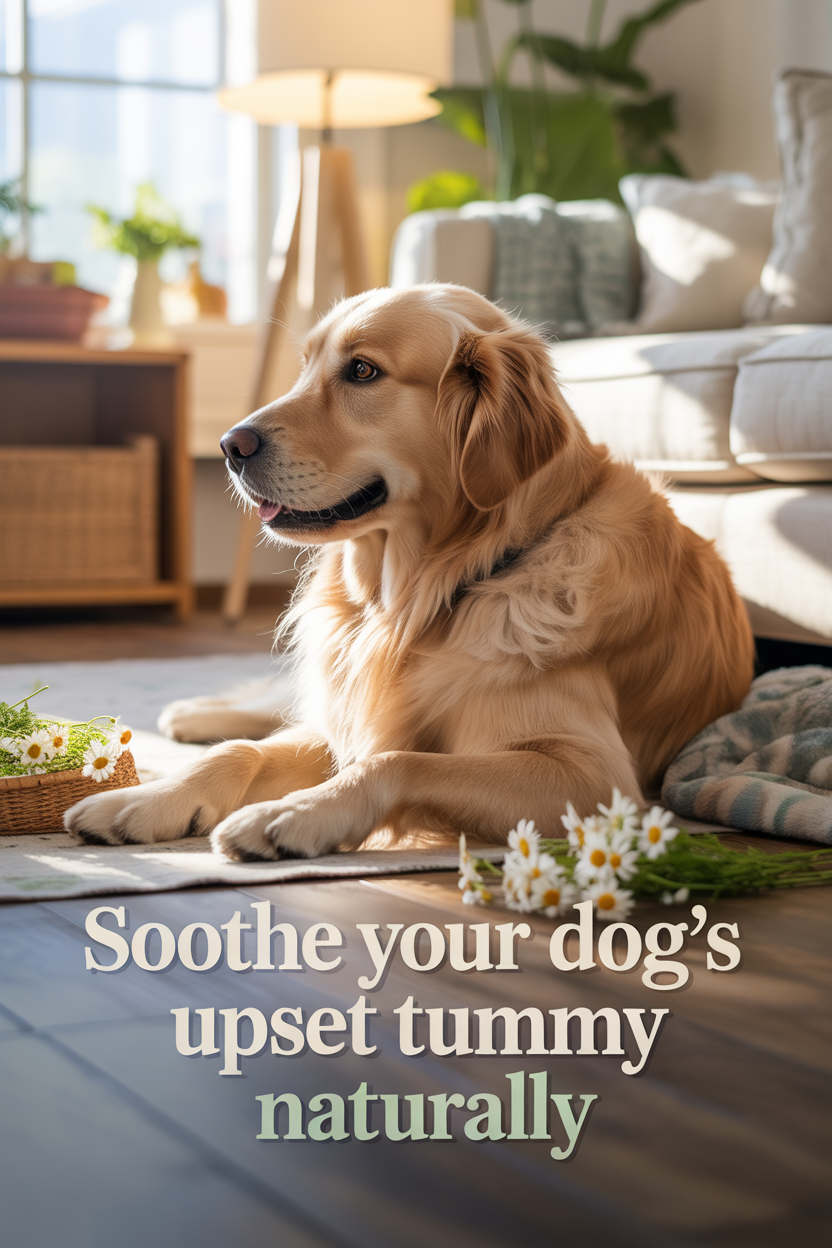
Once your dog is back to their happy, tail-wagging self, the goal is to prevent future episodes of nausea. By using a few proactive strategies, you can help maintain your dog’s digestive health and keep their tummy happy.
Consistency is key. Stick to a regular feeding schedule and avoid sudden changes to your dog’s diet. If you need to switch foods, do so gradually over a period of 7-10 days to allow their system to adjust.
Dog-proof your home to prevent “dietary indiscretions.” Secure your trash cans, keep human food out of reach, and ensure toxic plants and chemicals are locked away. For dogs that eat too quickly, a slow-feeder bowl can help prevent them from inhaling their food and swallowing air.
Managing stress is also important, as anxiety can be a major trigger for GI issues. Ensure your dog gets plenty of exercise and mental stimulation. For pups with persistently sensitive stomachs, talk to your vet about adding a long-term digestive supplement or probiotic to their routine.
An ounce of prevention is worth a pound of cure. These proactive strategies, combined with regular vet check-ups, can go a long way in keeping your dog’s digestion on track.
Foods to Avoid During Stomach Upset
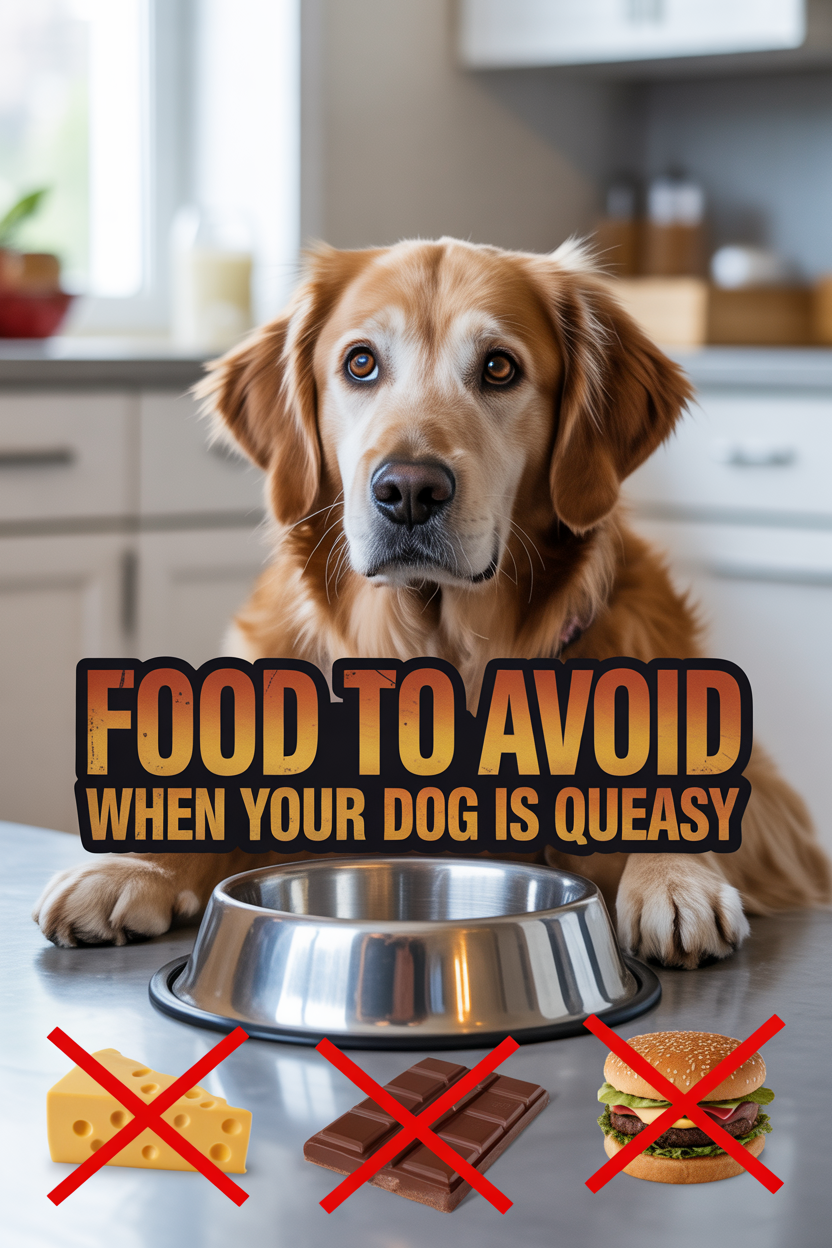
When your dog is feeling nauseous, avoid these items that could make things worse:
- Fatty or rich foods
- Most dairy products (except small amounts of plain yogurt)
- Store-bought treats with numerous ingredients
- Human food scraps, especially seasoned foods
- Any medications not prescribed by your vet
- Products with artificial sweeteners, especially xylitol
- Foods with seasonings, spices, or high salt content
When dealing with nausea, bland and simple is best. Your dog’s sensitive stomach needs gentle, easily digestible options until they recover fully.
Preventing Future Stomach Issues

After your dog recovers, these strategies can help prevent future episodes:
- Maintain a regular feeding schedule
- Make diet changes gradually over 7-10 days
- Secure trash cans and food storage
- Use slow-feeder bowls for dogs who eat too quickly
- Keep toxic plants, foods, and chemicals out of reach
- Schedule regular veterinary check-ups
- Consider digestive supplements for sensitive dogs
- Manage your dog’s stress levels
Prevention is always easier than dealing with a sick dog. These simple practices can significantly reduce the chances of digestive upsets.
The Bottom Line on Dog Nausea

Most cases of dog nausea can be successfully managed at home with the right approach. Fasting, bland diets, and natural remedies like ginger, pumpkin, and probiotics often provide relief.
However, always monitor your dog closely during home treatment. If symptoms persist or worsen, don’t hesitate to contact your veterinarian.
With proper care and these proven remedies, your dog will likely return to their normal, happy self quickly. Remember that while these home remedies are generally safe, every dog is unique. Your veterinarian remains your best resource for personalized advice, especially for recurring digestive issues.
By recognizing the early signs of nausea and responding promptly with appropriate home care, you can help your furry friend feel better faster and avoid more serious complications.






